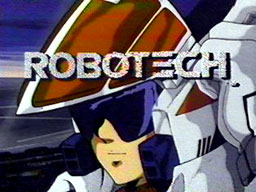
Robotech is an American science fiction franchise that began with an 85-episode anime television series produced by Harmony Gold USA in association with Tatsunoko Production; it was first released in the United States in 1984.

In the Macross Japanese anime series and its English adaptation Robotech, the first mass-produced transforming aerospace fighter mecha is called the VF-1 Valkyrie. The VF-1 Valkyrie is referred to as a "variable fighter" in Macross.

Comico: The Comic Company was an American comic book publisher headquartered in Norristown, Pennsylvania. Its best-known comics include the Robotech adaptations, the Jonny Quest continuation written by co-creator Doug Wildey, and Matt Wagner's Mage: The Hero Discovered and Grendel. Once considered a major contender on the American market, Comico went into bankruptcy in 1990, although it continued to sporadically publish books until 1997. In 2009, two of Comico's original founders launched an original webcomics site called CO2 Comics, which they explained was the reincarnation of Comico.

Tatsunoko Production Co., Ltd. and often shortened to Tatsunoko Pro, is a Japanese animation company. The studio's name has a double meaning in Japanese: "Tatsu's child" and "sea dragon", the inspiration for its seahorse logo. Tatsunoko's headquarters are in Musashino, Tokyo.
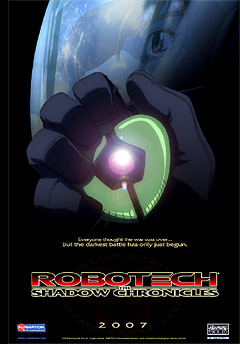
Robotech: The Shadow Chronicles is the 2006 animated sequel to the 1985 Robotech television series. It was released on DVD on February 6, 2007.

Harmony Gold USA, Inc. is an American film and television production company. It was founded in 1983 by Egyptian-born Frank Agrama and is managed by his daughter, Jehan F. Agrama.

Hikaru Ichijyo is one of the main fictional characters of the Macross Japanese anime series. His voice actor was Arihiro Hase. After the death of Arihiro Hase in 1996, he was voiced by Kenji Nojima in the PlayStation 2 Macross video game from 2003. In the English dub of the series produced by ADV Films, he is voiced by Vic Mignogna.
The Robotech Defenders are a line of scale model kits released by Revell during the early 1980s with an accompanying limited comic series published by DC Comics. Contrary to what their name seems to imply, the "'Robotech Defenders'" are not part of the Robotech anime universe adapted by Carl Macek and released by Harmony Gold USA, but they did adopt the same moniker and logo.

Ken Steacy is a Canadian comics artist and writer best known for his work on the NOW Comics comic book series of Astro Boy and of the Comico comic series of Jonny Quest, as well as his graphic novel collaborations with Harlan Ellison and Dean Motter. Steacy was a member of the Royal Canadian Air Cadets 386 Comox Squadron.

Robotech 3000 was Harmony Gold's attempt to revive the Robotech franchise before the turn of the millennium. After the relative success of Voltron: The Third Dimension and Roughnecks: Starship Troopers Chronicles, a new Robotech sequel was proposed that would use 3D CG visuals, with producer Jason Netter and writer original Roobtech Carl Macek at the helm.

In 1987, the Robotech animated series was adapted into novel form by authors James Luceno and Brian Daley and published by Del Rey Books. Having previously collaborated on the animated series Galaxy Rangers, the pair released the Robotech novels under the unified pseudonym of "Jack McKinney". Using fictitious epigraphs in the style of Dune, McKinney's novels escaped the limitations inherent in the dubbed cartoon and fleshed out its chronology in greater detail; most significantly, by adapting the storyline of the aborted sequel project, "The Sentinels". The entire series lasted for twenty-one books, the first fifteen of which were later collected into five three-book omnibus compilations in the early 1990s.

The Robotech Role-Playing Game is a licensed science fiction role-playing game published by Palladium Books in 1986 that is based on the Robotech and Robotech II: The Sentinels anime television series, which were, in turn, based on the Japanese mecha anime television series Macross. A second edition of the game, based on Robotech: The Shadow Chronicles, was released in 2008.

Robotech is an American 85-episode adaptation of three unrelated Japanese anime television series made between 1982 and 1984 in Japan; the adaptation was aired in 1985. Within the combined and edited story, Robotechnology refers to the scientific advances discovered in an alien starship that crashed on a South Pacific island. With this technology, Earth developed giant robotic machines or mecha to fight three successive extraterrestrial invasions.
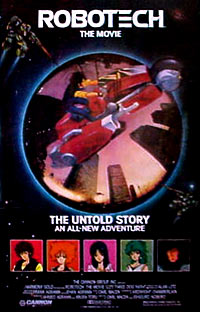
Robotech: The Movie, also called Robotech: The Untold Story, is a 1986 American-Japanese science fiction animated film based on the Robotech TV series and Robotech franchise created by Harmony Gold USA. The film was created by splicing together footage from the Japanese direct-to-video movie Megazone 23 Part I and animated television series Super Dimension Cavalry Southern Cross, and had only a loose connection to the Robotech TV show.
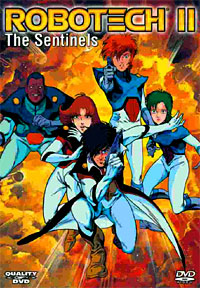
Robotech II: The Sentinels was an attempt by Harmony Gold USA to continue the original 1985 Robotech television series. Only three episodes were ultimately animated before the project was canceled in 1986, and a feature-length film was released from footage taken from the completed episodes. The aborted 65-episode Sentinels series would have followed the ongoing adventures of Rick Hunter and Lisa Hayes and the rest of the Robotech Expeditionary Force (REF) during the events of The Robotech Masters and The New Generation series.

Robotech: Prelude to the Shadow Chronicles is a five-part comic book mini-series written by Tommy Yune along with the Waltrip brothers, who were previously the art-and-writing team of the Robotech II: The Sentinels comic series. It was published under DC Comics' Wildstorm imprint. It bridges the gap between The Sentinels and the new movie Robotech: The Shadow Chronicles, and also features characters from the Robotech Masters Saga. The series is important, in that it provides an explanation and deepened background for many of the events seen on screen in the movie, and clears up many apparent contradictions within the original animation.
Jason Waltrip and John Waltrip are identical twins who comprise a comic book art and writing team, known for their work on Robotech comics and in webcomics.
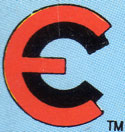
Eternity Comics was an American comic book publisher active from 1986 to 1994, first as an independent publisher, then as an imprint of Malibu Comics. Eternity published creator-owned comics of an offbeat, independent flavor, as well as some licensed properties. One of its most notable titles was Ex-Mutants. Eternity was also notable for reprinting foreign titles, and introducing Cat Claw, The Jackaroo, and the Southern Squadron to the U.S. market.

Diana Schutz is a Canadian-born comic book editor, serving as editor in chief of Comico during its peak years, followed by a 25-year tenure at Dark Horse Comics. Some of the best-known works she has edited are Frank Miller's Sin City and 300, Matt Wagner's Grendel, Stan Sakai's Usagi Yojimbo, and Paul Chadwick's Concrete. She was known to her letter-column readers as "Auntie Dydie". She was an adjunct instructor of comics history and criticism at Portland Community College.


















